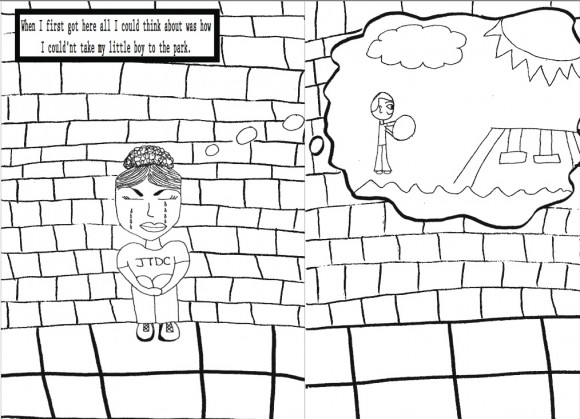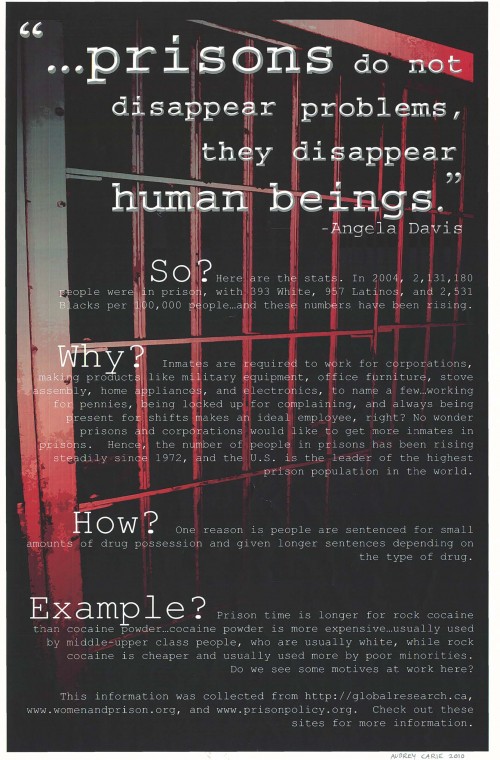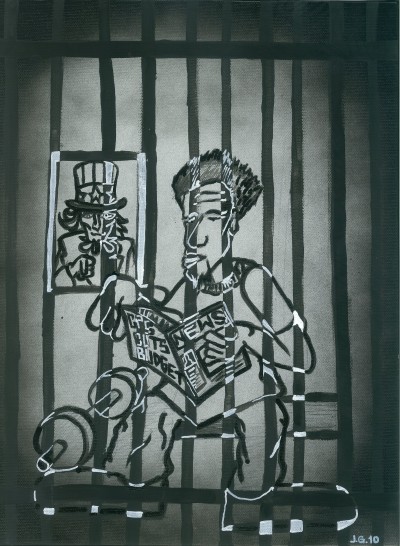Today has been a rough day for me and it is not even noon yet. I have been moping around my office complaining to anyone within the sound of my voice about how tired I am and how much “work” I have to do. I am sure many of you can relate to this feeling.
Anyway as I was about to begin my latest rant about how so and so wasn’t getting me what I needed “on time,” a friend and colleague sent me the picture below:

I was put to shame. Look, I am definitely not a saint and I don’t expect that I will never or should never complain. We all have our own problems and issues. However, I took one look at this image and I thought about the fact that I could just walk out of my office, leave all of the annoyance and stress of the day behind, and go and grab some lunch. I could take a walk along the lake which is not far from my office. I could call a friend and take in a movie with her tonight. I can stop by my partner’s office and talk his ear off about how my day sucked. I am NOT confined in a jail cell unable to have contact with my family or friends.
This illustration is part of a project taking place at our local juvenile jail. About a year ago, I came up with the idea of creating a graphic novel or zine about the history of juvenile justice and its contemporary manifestations. My idea was that this could be a collaborative project between youth on the inside and youth on the outside.
Early this year, I pitched the idea to my friend Lisa Lee who is the director of the Jane Addams Hull House Museum. Lisa, as is her custom, jumped right on the idea and suggested a partnership between my organization and the museum on this project. Truth be told, without Hull House Museum, this would still only be an idea rather than a project in the process of being implemented. So the image featured above comes from a comic/zine making workshop that we are sponsoring at our local juvenile jail. An incredible teaching artist, Elgin Smith, is working with the youth at the jail. So far, they have talked about the history of juvenile justice and learned about the fact that the first juvenile court was established right here in Chicago in 1898. They are also working on illustrations about their own experiences of being incarcerated or anything else that they want to write about.
In September, another terrific teaching artist, Rachel Williams will work with youth on the outside to do the same thing. These images and ideas will all be put together in a book which will be made available next Spring to educators and community organizations across the city.
Since my first conversation with Lisa about this idea, the partnership has grown to include my consulting on a new exhibit about juvenile justice that opens at the museum on September 8th. I will have more to say about the exhibit when it opens.
So if you are struggling today and having a day much like mine, I hope that this illustration helps put things in perspective for you as it has me. I also hope that you will take a moment to think about what you can do with your own talents and ideas to support incarcerated youth in your town or city.






